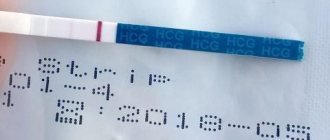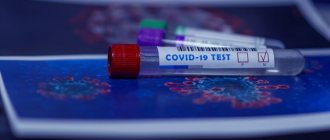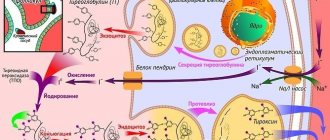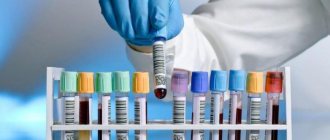Immunoglobulin IgE is an antibody that protects our body from parasites and cancer, but also causes intense allergic reactions. Read the article for more details about the role of IgE immunoglobulin in the body, its normal range, high and low levels and much more.
The article is based on the findings of 109 scientific studies
The article quotes authors such as:
- Division of Infectious Diseases, University of California, Irvine, USA
- Department of Physiology, Faculty of Medicine, University of Kelaniya, Sri Lanka
- The Randall Centre, King's College London, UK
- Washington University School of Medicine, St. Louis, USA
Please note that the numbers in parentheses (1, 2, 3, etc.) are clickable links to peer-reviewed scientific studies. You can follow these links and read the original source of information for the article.
What is immunoglobulin IgE
Immunoglobulin E (IgE)
- This is a type of antibody. Our immune cells, called B cells (or plasma cells when activated), produce antibodies in response to allergens, pathogens, cancer cells and other threats. Antibodies help our immune cells recognize and remove these “homeostasis disruptors.” (, )
The main role of IgE is to protect your body from worms and other parasitic infections. It is also involved in allergic reactions. (, )
Scientists theorize that immunoglobulin IgE flags all sorts of unwanted components, acting as a gatekeeper to our immune system. In response to these tagged components, T cells of the immune system release the cytokines IL-4 and IL-1, which stimulate the production of IgE antibodies. (, )
Allergy
IgE immunoglobulin is associated with the most common allergic reaction known as type 1 hypersensitivity
. This is an uncontrolled immune response to environmental components (antigens) in allergic diseases such as ():
- Asthma
- Atopic dermatitis (eczema)
- Allergic rhinitis (hay fever)
- Food allergies
A person with an allergy produces specific IgE antibodies to the allergen during first exposure, known as sensitization. These antibodies bind to immune cells (mast cells and basophils), allowing them to recognize the allergen next time.
SCHEME OF ACTION OF IMMUNOGLOBULIN IgE IN ALLERGY
Subsequently, when the same allergen enters the body, a huge amount of IgE stimulates mast cells and basophils to release histamine and other “defensive weapons.” This leads to unpleasant symptoms ranging from skin itching, inflammation to life-threatening conditions. (, )
Our immune B cells produce a specific type of immunoglobulin, IgE, for each allergen, which is why you may be allergic to just one irritant, such as peanuts, or to several of them. () Over time, an allergy to a specific allergen can lead to an increase in the number of allergens, due to the molecular similarity of the irritants.
Parasitic infection
The IgE antibody has evolved as our defense mechanism against parasitic infections. The presence of parasites (helminths) in your body causes intense production of IgE. () The resulting chain reaction also includes mast cells, and is designed to destroy and remove the infection.
Protection against viruses and cancer
IgE immunoglobulin may be critical for the antiviral immune response, although its role is less studied. Scientists have identified human IgE antibodies to some respiratory viruses. (, )
SCHEME OF ACTION OF IMMUNOGLOBULIN IgE AGAINST CANCER CELLS (source)
New evidence suggests the importance of these antibodies in cancer prevention
. IgE tags cancer cells and helps our immune system destroy them before they spread. () Indeed, higher levels of IgE may protect you from some types of cancer (more below).
Norms of indicators in adults and children
Under normal conditions, the concentration of total immunoglobulin E in the blood plasma is very low. This is explained by the fact that in the absence of atopic antigens, almost no protective protein is produced.
When measuring the amount of serum immunoglobulin, it is customary to take the international unit per milliliter (IU/ml).
The norm of total igE in children changes dynamically with age and may differ from the values of an adult.
Table “Normal amount of class E antibodies in blood plasma in a child and an adult”
| Age | Norm of total IgE, IU/ml |
| From birth to one year of age | 0–29 |
| 1–2 years | 0–49 |
| 2–3 years | 0–45 |
| 3–9 years | 0–53 |
| From 9 to 15 years | 0–200 |
| Adults | 0–100 |
From the first day of life until the age of 15 years, the IgE level gradually increases. Closer to puberty, the values are finally established and do not change over the years. A decrease in the number of protective class E antibodies in old age is normal.
Elevated immunoglobulin E - what does this mean?
When an allergenic antigen enters the body, the IgE level rises sharply.
This may indicate the following conditions:
- Atopic pathologies - dermatitis, bronchial asthma, rhinitis, allergic gastroenteropathy.
- Anaphylactic diseases - urticaria (angioedema), systemic anaphylaxis.
Provoking factors for such manifestations may be:
- dust;
- nutritional supplements;
- foreign protein;
- pollen;
- medicines;
- metal derivatives;
- substances of chemical origin.
IgE levels can be increased by pollen
An increase in total immunoglobulin E is also possible due to defects in T-lymphocytes (responsible for the strength and duration of the immune response).
In this case, if IgE is elevated, this is evidence of:
- hyperimmunoglobulinemia;
- deficiency of selective protein IgA;
- thymic aplasia;
- myeloma (uncontrolled growth) of IgE proteins;
- congenital immunodeficiency (thrombocytopenia, eczema).
Another reason for the increased amount of total immunoglobulins is the conflict between donor and host cells after tissue transplantation. In this case, the transplanted cells perceive the new organism as a threat and attack it (usually the skin, mucous membranes, and digestive system are affected).
Table “Indicators of total IgE at the time of pathological changes in the body”
| Content of class E antibodies, IU/ml | Decoding (when such indicators occur) |
| 120–1200 | For asthma |
| 120–1000 | For allergic rhinitis |
| 1000–14000 | For hyperimmunoglobulinemia |
| Over 15000 | For IgE myeloma |
| 80–14000 | For skin allergies (atopic dermatitis) |
The level of immunoglobulin E in the blood can be moderately increased (mild course of the disease) or go off scale (acute course). In order to correctly identify the allergen and the cause of the pathology, deciphering the results and making a diagnosis must be done exclusively by a specialist.
Low immunoglobulin E
Class E protein in the blood can not only be increased, but also greatly decreased. A sharp decrease in serum immunoglobulin indicates ataxia-telangiectasia (the development of a severe gynetic disease of the central nervous system). The cause of this condition is defects in the normal functioning of T-lymphocytes (hereditary or acquired immunodeficiency).
Difference between immunoglobulins IgE and IgG
IgG immunoglobulins are our main antibodies and make up approximately 75% of the total amount of all antibodies. They protect us from infections by suppressing all types of pathogens such as bacteria, viruses and fungi. ()
On the other hand, IgE is present in tiny amounts in a healthy body and it specializes in parasitic infections.
IgE is involved in the overall, more immediate allergic reaction
(type 1). This reaction either appears immediately upon encountering the allergen, or begins up to 4 hours after exposure to the irritant. (, )
IgG plays a central role in allergic reactions of types 2 and 3
. Such reactions tend to take longer to develop and include some food and drug allergies. (, , )
IgG antibodies may also exhibit anti-inflammatory properties and indicate tolerance (not sensitivity) to specific foods. This is why IgG-based food sensitivity tests don't work. ()
Preparing for analysis
The biomaterial for the study is venous blood, which is taken from the ulnar vein in adults or the umbilical vein in newborns.
- Blood is drawn in the morning, when the IgE concentration reaches its peak;
- Blood must be donated on an empty stomach (at least 8-10 hours must pass after the last meal);
- On the day of the examination (immediately before the procedure), you can drink only plain water without gas;
- 2-3 hours before venipuncture, you should not smoke and/or use nicotine replacement products (chewing gum, spray, patch);
- The day before and on the day of blood sampling, the consumption of alcoholic beverages, drugs, and energy drinks is prohibited;
- Before the analysis, it is advisable to protect yourself from physical exertion and emotional stress.
Important! An immunological study is carried out 2 weeks after discontinuation of any medications or before the start of treatment. An IgE test is not prescribed during or immediately after physiotherapeutic procedures and other types of diagnostics (MRI, CT, radiography, etc.).
Other tests to assess immunity
- Immunoglobulin IgA
- Immunoglobulin IgG
- Immunoglobulin IgM
- Interleukins 1, 6, 8, 10
- TNF (tumor necrosis factor)
Analysis for the level of immunoglobulin IgE
Your doctor will usually order an IgE blood test when you have recurring infections or need to monitor immune disorders such as allergies.
New modern methods for detecting IgE are more sensitive and, in addition to total IgE levels, they also detect and measure specific IgE antibodies
with an accuracy of up to 98%. This feature can help in more accurate diagnosis and treatment of allergies. ()
For example, testing for specific IgE can replace food tests in diagnosing food allergies. (, )
On the other hand, total IgE is not a specific marker and cannot be used to diagnose a specific disease
. However, it can indicate certain signs, such as the risk of allergies, infections and some chronic diseases. ()
Norm of immunoglobulin IgE
IgE has the lowest concentration of all antibodies, especially in people without allergies. Normal values may vary in the scientific literature, but the usual reference range of standard laboratories is 1,5 – 144
IU/ml. (, )
However, most laboratories have a lower detection limit of 2 – 2,5
ME/ml, at which IgE levels are considered very low. (, )
In studies involving more than 15,000 people, the majority of healthy adults showed IgE values below 150
IU/L, while the average was about
27.2
IU/L. (, )
Men tend to have higher IgE values than women, with differences of up to 20 IU/L. (, , )
IgE levels rise during childhood, peak at 10-15 years of age, and then begin to decline as we get older. In a study of more than 500 preschool children, the mean IgE value was approximately 80
ME/l. (, )
Other factors that affect IgE levels include:
- Genetic predisposition
- Exercise stress
- Smoking
- Alcohol consumption
- Environmental factors
- Immune status (, , , )
Features of IgE analysis
Because many different diseases or health conditions can increase total IgE, it is not suitable for diagnosing a specific disease
or even allergies in general. (, )
Low IgE levels are a little more specific, but they also cannot confirm the exact type of immunodeficiency without additional tests. (, )
Being nonspecific, the cost-effectiveness and routine clinical use of the total blood IgE assay are questionable. ()
When it comes to allergies, skin testing remains the first choice
. They are sensitive, suitable for most allergens, more convenient and less expensive than a general IgE test. (, )
Causes of high levels of immunoglobulin IgE
IgE levels are a marker of immune health. A low or high level does not necessarily indicate a problem unless there are any symptoms or if your doctor tells you not to worry about it.
Most laboratories report that IgE levels are higher 150
ME/L is considered high. Children and women usually have lower values, but this depends on other factors discussed below.
Allergy
Allergies are the most common cause of elevated IgE
. IgE immunoglobulin levels increase in response to allergens, which are different for each person. For some, the irritants are dietary (food allergies), while for others they are seasonal (pollen allergies, hay fever). ()
DIAGRAM OF THE MECHANISM OF ALLERGY INVOLVING IMMUNOGLOBULIN IgE
Values of total immunoglobulin IgE is not a sensitive laboratory parameter, but levels are above 200
IU/L often indicates the presence or increased risk of developing allergies. (, , )
According to a study involving more than 8,000 people, IgE
> 100
IU/L increase the risk of atopy (the occurrence of an allergic reaction in the future).
In another study of 1,300 Asian children, this limit was even lower - about 77.7
IU/L. (, )
Eczema, asthma and hay fever
Atopic dermatitis or eczema
usually cause the highest levels of IgE, followed by asthma and hay fever. In a study done on Chinese children, those who had higher IgE levels also had more severe forms of eczema. In people with seasonal allergies, IgE levels peak 4 to 6 weeks after pollen season. (, )
In another study of more than 1,000 people, people without allergies had the lowest mean values (43.7 IU/L), followed by people with hidden allergies (213.8 IU/L) and asthma (626.6 IU/L) . ()
Hidden allergies are not accompanied by typical symptoms. Apparently, even slightly elevated IgE can indicate them.
A study of 562 children confirmed the association between asthma and total IgE levels. It was a useful marker of lung sensitivity
even in children without symptoms of the disease. ()
In a study of 69 people with chronic hay fever, the average IgE level was 378 IU/L, well above the normal range. ()
Food allergies
Exposure to food allergens causes only a transient increase in total IgE. Interestingly, processed foods
foods containing a particular allergen can cause
3-8 times higher levels of IgE
compared to raw food allergens. (, )
FOOD ALLERGEN ALLERGIC REACTION PATTERN
Total IgE testing cannot detect food allergies, but tests that measure specific antibodies can indicate it. ()
Parasitic infections
As mentioned, the main role of IgE is to detect and eliminate worms and other parasites from our body. In the absence of allergic problems and symptoms, the most likely cause of high IgE levels is a parasitic infection
. (, )
Our bodies produce some parasite-specific IgE immunoglobulins, but they are not always found in people with such infections. Additional tests from a stool sample or blood smear may be needed to confirm the diagnosis. (, )
Dominance of Th2 immune cells
One theory of immune regulation suggests homeostasis between the activity of T helper 1 (Th1) and T helper 2 (Th2) cells. Th1 cells drive “cellular immunity” to fight viruses and other intracellular pathogens, excluding cancer cells, and stimulate hypersensitivity reactions in the skin. Th2-type cells control “humoral immunity” and increase the production of antibodies to fight extracellular organisms (parasites). ()
Th2 immune cells produce interleukin IL-4
, which is the primary signal for B cells to begin producing immunoglobulin IgE. Thus, people with dominant Th2-type cells are more likely to have higher levels of these antibodies. (, )
PLANT FLAVONOIDS CAN MODULE THE IMMUNE Th1/Th2 RESPONSE
Several nutrients have significant effects on the balance of Th1/Th2 immune cells, including sterols, the hormone melatonin, probiotics, progesterone, and the minerals selenium and zinc. The long-chain omega-3 fatty acids EPA (eicosapentaenoic acid) and DHA (docosahexaenoic acid) significantly improve various inflammatory and autoimmune conditions without any specific Th1/Th2 effect.
Rare diseases
IgE hyperproduction syndromes
(HIES) are rare disorders accompanied by increased levels of IgE in the blood. People suffering from them often suffer from skin and respiratory infections due to impaired immunity. ()
A rare type of cancer called IgE multiple myeloma
, affects plasma cells and causes increased production of these antibodies. (, )
Both conditions are unusual, and there is no reason to panic if your blood test shows high IgE levels. A benign cause, such as exposure to allergens, is much more likely.
Other causes of increased IgE
People with African ancestry and those who live in tropical areas naturally have higher IgE due to frequent parasite infections. ()
Other medical conditions or lifestyle factors that can increase IgE levels:
- Smoking (, , )
- Alcohol consumption (, , )
- Inflammatory bowel diseases (, )
- Bacterial and viral infections (, , )
- Lymphomas (cancer of the lymphatic system) (, )
- Nephrotic syndrome (impaired kidney function) (, , )
Because many different body conditions can increase the value of total immunoglobulin IgE, it is not suitable for diagnosing a specific disease or even allergy
. (, )
Timeframe for completing the analysis
A blood test for immunoglobulin E is performed in 1-3 days and is considered quite complex. You can get an accurate result by contacting trusted laboratories that have modern equipment.
There are two methods for determining antibodies: radioallergosorbent (RAST) and enzyme-linked immunosorbent assay (ELISA).
ELISA analysis for IG E
In the first method, an allergen is added to the blood, which either provokes an increased growth of immunoglobulin, then the result is considered positive, or not - negative. This technique is effective in cases where an allergic reaction is detected.
Enzyme immunoassay allows you to determine the value of immunoglobulin, focusing on the production of antibodies that react to existing antigens. This analysis is considered more accurate.
Concomitant diseases with elevated levels of immunoglobulin IgE
In a study of more than 1,000 elderly participants, high levels of IgE
(≥267 cu/l) was associated with a more than
2-fold higher incidence of cataracts
compared with average values (35-87 IU/l).
Another similar study found 37%
higher rates of elevated IgE in cataracts. (, )
Elevated levels of immunoglobulin IgE increased the risk of developing type 2 diabetes by 67-72%.
in 2 studies involving more than 1,800 adults. It was correlated with increased blood glucose levels and the occurrence of insulin resistance, independent of other risk factors. (, )
However, in a Japanese study, patients with type 2 diabetes had lower IgE levels compared to controls
(22.5 versus 43.3 IU/L), while on average in patients with autoimmune type 1 diabetes, IgE was slightly higher (56.7 IU/L). ()
Future clinical trials should examine the relationship between IgE and diabetes. One thing is certain: allergic diseases may increase the risk of developing diabetes (both types) and vice versa, which may explain the association between total IgE values and the presence of diabetes in some patients. (, , )
Potential Benefits of Increased IgE
Although elevated IgE usually signals an undesirable health condition, high levels of IgE may be associated with a lower incidence of cancer.
A meta-analysis of eight clinical studies (involving more than 6,000 people) found significantly lower rates of malignancy
brain in people with high levels of total IgE. ()
According to another study with almost 38,000 participants, elevated IgE levels have a mixed correlation with different types of cancer. After controlling for other confounders, higher IgE levels were associated with a halving of the risk of developing blood cancer . ()
IgE antibodies can help your immune system target and destroy cancer cells. New anti-cancer drugs based on the influence of IgE have shown promising results in preclinical trials. This type of research falls into a growing field of medicine called allergy-oncology. (, )
Elevated levels of immunoglobulin IgE: methods of normalization
IgE immunoglobulin levels are a marker of immune health. A low or high level does not necessarily indicate a problem if there are no symptoms or if your doctor says there is nothing to worry about. Increasing your IgE levels will not necessarily improve your immune balance, but it can be used as a biomarker to assess your immune health.
Below is a list of additional approaches to improve immune health that can also balance high IgE levels. Although research suggests that various dietary and lifestyle factors can reduce IgE values, more large-scale studies are needed.
Be sure to talk to your doctor before making any major changes to your daily life.
Medications
Your doctor may prescribe immunologic medications to manage your high IgE levels. Treatment will depend on the underlying condition and your general symptoms.
For example, you may receive an inhaled medication for asthma, creams for eczema, or nasal sprays for hay fever.
These drugs may contain corticosteroids
(to reduce swelling),
antihistamines
(to block inflammation caused by histamine), or
decongestants
(to relieve nasal congestion). ()
There are drugs aimed at reducing immunoglobulin IgE
- Omalizumab
, a biological drug containing
anti-IgE antibodies
. They bind to IgE and remove it from the bloodstream, thereby reducing the allergic reaction. The US Food and Drug Administration (FDA) has approved this medication for the treatment of asthma and chronic hives. (, ) - Nedocromil sodium
and
disodium cromoglycate
(cromolyn sodium), which belong to a group of drugs called mast cell stabilizers. They come in the form of inhalers, nasal sprays and eye drops to treat asthma and seasonal allergies. (, , )
Avoiding allergens
If you are allergic to a certain food or animal, avoiding them will help prevent allergic reactions. You can also clean your home and workspace regularly to get rid of dust mites or mold.
Abstinence from smoking and drinking alcohol
Research shows a clear connection between smoking and high levels of immunoglobulin IgE. The same goes for drinking alcohol, even in moderation.(, , , )
Abstaining from smoking and drinking alcohol will help improve your immunity and your overall well-being.
Increasing the amount of vitamin E in the diet
Foods high in vitamin E can ease allergic reactions and also reduce IgE levels. Include a variety of vitamin E-rich foods in your diet.
Some foods high in vitamin E
- Sunflower seeds
- Almond
- Hazelnut
- Spinach
- Broccoli
- Avocado (, 88, )
DIAGRAM OF THE POSITIVE INFLUENCE OF QUAIL EGG ON REDUCING ALLERGIES AND REDUCING INFLAMMATION IN FOOD ALLERGIES (source)
Additional substances
Probiotic strain of bacteria Bifidobacterium longum
able to reduce IgE levels and fight allergic reactions (from numerous studies in mice and cells) (, , , )
Other strains of bacteria that may help include B. breve, L. plantarum and L. crispatus. (, , )
In addition to probiotics, certain supplements can support the immune system and also reduce the overproduction of immunoglobulin IgE:
- Vitamin E (, )
- Fish fat (, )
- Flavonoids (luteolin, apigenin, narirutin/naringenin) (100, 101)
More research is needed to confirm the beneficial effects of these supplements on the immune system. Consult your doctor before taking these substances.
How to lower immunoglobulin E?
The basis for lowering high levels of serum immunoglobulin is the elimination of the allergen that caused one or another negative reaction from the immune system. Only after an accurate diagnosis is drug therapy prescribed, which can be supported by folk remedies.
Treatment with drugs
Groups of drugs directly depend on the identified source of negative reactions:
- Antihistamines. They suppress the functioning of those receptors that react to the immediate allergen. The most effective drugs are: Suprastin, Cetirizine, Zodak, Diazolin, Clemastine, Loratadine.
- Topical medications. Help eliminate external symptoms of the disease and prevent complications. Bepanten ointment, Diprosalik, Radevit, Eplan cream, Imakort, Fenistil-gel are often prescribed.
- Drugs to stimulate the immune system (Arbidol, Amiksin). In patients with Ig-dependent allergies, immunity is increased by gradually increasing the doses of allergens that are introduced into the body. This allows for a long-term lull in allergic manifestations.
- Antihelminthics – Pyrantel, Piperazine, Levamisole, Albendazole.
Drug treatment is selected by the doctor, taking into account all the features of the disease, its cause and severity.
Suprastin is an antihistamine
How to reduce with folk remedies
Traditional recipes will help maintain your general condition and reduce unpleasant allergy symptoms.
Herbal decoction
You will need:
- St. John's wort leaves – 60 g;
- centaury grass – 75 g;
- corn silk – 15 g;
- horsetail – 30 g;
- chamomile inflorescences – 45 g;
- rose hips (berries) – 60 g;
- dandelion root – 45 g.
Herbal decoction will help reduce immunoglobulin E
Grind all ingredients thoroughly and mix. Infuse 15 g of herbal mixture in 250 ml of hot water. After 6–7 hours, place the infusion in a water bath and bring to a boil. After at least 4 hours, strain and drink a third of a glass before each meal. Duration of treatment is 3–5 months.
Eggshells and lemon juice
Peel the shells of several boiled eggs from the film and grind into a powdery mass. Take 1 tsp. (2-3 times a day), after sprinkling with a few drops of fresh lemon juice. The course of treatment is from 1 month.
Crushed eggshells are good for allergy symptoms
Dandelion and burdock
Grind the roots of dandelion and burdock (taken in equal parts). Select 2 tbsp. l. vegetable collection and pour 600 ml of water, leave for 12 hours. Boil the liquid for 7–10 minutes, leave for 15 minutes and strain. Take 100 ml of decoction 4-5 times a day. Treatment lasts at least a month.
A decoction of dandelion and burdock lowers immunoglobulin E
When using traditional medicine recipes to lower immunoglobulin E, it is important to remember that this must be agreed with your doctor. Alternative methods are an auxiliary link in the complex drug treatment of allergies, which must be used carefully.
Reduced level of immunoglobulin IgE
The level of immunoglobulin IgE can be quite low in the absence of allergic reactions and other irritants. And such a low level of IgE usually does not indicate any disease.
Selective IgE deficiency
Or IgE hypogammaglobulinemia is a type of immunodeficiency with antibody levels below the detection limit: < 2 – 2,5
Chalk.
May cause the following symptoms in humans:
- Joint pain
- Chronic fatigue
- Cough
- Difficulty breathing (102, )
If the levels of other antibodies (IgG, IgM, IgA) are low, then the most likely cause is common variable immunodeficiency
(CVID). People with CVID have frequent respiratory and other infections that can damage tissue in the lungs and other organs. (103, 104, 105)
Lack of IgE antibodies and immunodeficiency can also occur due to:
- Taking medications
- Kidney and intestinal diseases
- Cancer
- Severe burn (106, )
IgE in such cases is low, but usually above 2
Chalk. (103)
Ataxia-telangiectasia
Is a rare hereditary immunodeficiency with low levels of IgE while other antibodies are in the normal range. It causes “spider veins” and neurological disorders. (107, 108)
Compared to high IgE values, low IgE is a slightly more specific laboratory marker, but it cannot confirm the exact type of immunodeficiency without additional tests.
. (, )











